Unveiling the Secrets of Sun Yat-Sen Mausoleum: History, Architecture, and Spiritual Significance
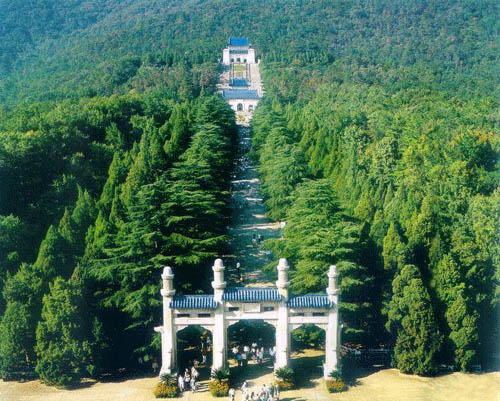
An Essential Guide to Visiting Sun Yat-Sen Mausoleum
Nestled in the picturesque embrace of Purple Mountain, the Sun Yat-sen Mausoleum stands as a stunning tribute to one of China’s most revered figures, Dr. Sun Yat-sen. What sets this site apart is not just its grandeur but the profound symbolism embedded in its architecture, which is designed to resemble an alarm bell—a resonant reminder of Dr. Sun’s heroic struggle for the country’s independence and democratic ideals. As the father of the Republic of China, his legacy is immortalized here amidst a backdrop of breathtaking scenery, making the mausoleum a pilgrimage site for many both at home and abroad.
In this essential guide, we’ll delve into the mausoleum’s historical significance, explore its awe-inspiring design, and navigate the various components of this expansive complex. You’ll discover the key attractions within the mausoleum, including the impressive Sacrificial Hall and the evocative statue of Dr. Sun, while also learning practical tips on how to get there, ticketing information, and nearby attractions worth visiting. Whether you’re a history buff, architectural enthusiast, or simply seeking to experience the beauty of Nanjing, this guide will ensure that your visit to the Sun Yat-sen Mausoleum is both enriching and unforgettable.
In This Guide
- An Essential Guide to Visiting Sun Yat-Sen Mausoleum
- The Rich History and Legends of Sun Yat-Sen Mausoleum
- Main Highlights: What You Absolutely Can’t Miss
- Planning Your Visit: A Practical Guide
- Tickets: Prices, Booking, and Tips
- How to Get There: A Complete Transportation Guide
- Local Cuisine and Accommodation Nearby
- Frequently Asked Questions
- Final Thoughts on Your Trip
The Rich History and Legends of Sun Yat-Sen Mausoleum
Nestled within the picturesque landscape of Purple Mountain in Nanjing, the Sun Yat-sen Mausoleum stands as a testament to the profound legacy of Dr. Sun Yat-sen, the revered father of modern China. This architectural marvel not only pays homage to his life and contributions but also encapsulates the turbulent history that shaped the nation.
The Visionary Leader
Dr. Sun Yat-sen (1866-1925) is celebrated as the pioneering figure of the Chinese democratic revolution. He was instrumental in the overthrow of the Qing Dynasty, ending over two millennia of imperial rule, and laying the groundwork for the establishment of the Republic of China in 1912. His vision for a modern, democratic nation was rooted in the principles of nationalism, democracy, and people’s livelihood, which he articulated through his political philosophy known as the “Three Principles of the People.”
The Mausoleum’s Construction
The construction of the mausoleum began in 1926, shortly after Sun Yat-sen’s death in 1925. Designed by architect Lu Yanzhi, it was completed in 1929. The sheer scale of the mausoleum—covering approximately 80,000 square meters—echoes the monumental impact of Sun’s legacy. Built facing south, the structure is designed to ascend gradually, symbolizing the noble spirit and perseverance of the man it honors. From above, the layout resembles a bell, representing the call to action for the Chinese people.
Architectural Marvel
A journey through the mausoleum begins at the grand marble Paifang, inscribed with the word “Bo Ai” (love). Visitors traverse a 480-meter long pathway, flanked by orderly cypress and pine trees, leading to the impressive Frontispiece. This structure features three archways adorned with copper gates, beneath which lies a pavilion housing a towering stele. The stele, devoid of an epitaph, simply bears 24 characters—reflecting the belief that no words could encapsulate Sun Yat-sen’s greatness.
Climbing the steps to the Sacrificial Hall, visitors reach the highest point of the mausoleum, where a 4.6-meter tall statue of Sun Yat-sen gazes forward, symbolizing his unwavering vision. The hall itself combines Western and Chinese architectural styles, reinforcing the idea of unity and modernity that Sun championed throughout his life.
Legends and Anecdotes
The mausoleum is steeped in history and legends, with stories that highlight the deep respect and admiration the Chinese people hold for Sun Yat-sen. One popular legend recounts how, during his lifetime, Sun Yat-sen made a solemn vow to return to Nanjing after his death, promising to protect the nation he fought so valiantly for. After his passing, many believed that his spirit would watch over the mausoleum, ensuring the prosperity and unity of the nation.
Another tale speaks of the countless visitors who trek to the mausoleum to pay their respects. Many claim to have felt a sense of peace and inspiration upon visiting, as if Sun’s spirit imparts wisdom and strength to those who honor his memory. These experiences serve to reinforce the mausoleum’s status not just as a burial site, but as a sacred ground for reflection and reverence.
A Symbol of National Pride
Today, the Sun Yat-sen Mausoleum stands as a national shrine, drawing visitors from around the world who wish to pay homage to a leader whose ideals continue to resonate. It serves as a reminder of a pivotal era in Chinese history and the enduring legacy of a man who dreamed of a prosperous, unified nation. As you walk amidst the serene surroundings and contemplate the grandeur of its architecture, you can almost hear the echoes of Sun Yat-sen’s vision for China—a vision that still inspires countless individuals to this day.
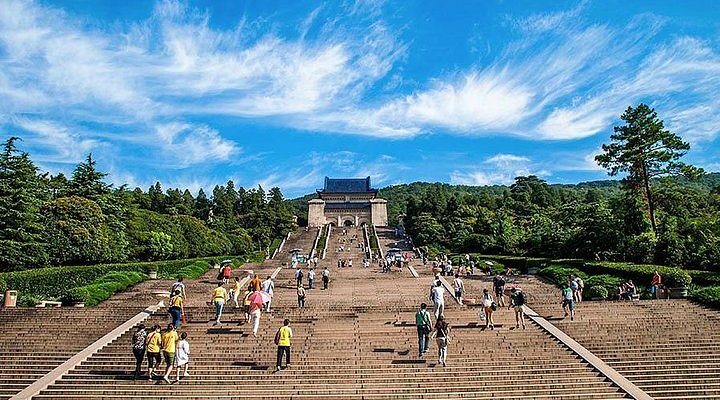
Sun Yat-Sen Mausoleum.
Main Highlights: What You Absolutely Can’t Miss
The Majestic Entrance: Paifang Memorial Archway
As you approach the Sun Yat-sen Mausoleum, your journey begins at the magnificent Paifang, or memorial archway. Towering above, this grand structure is inscribed with the Chinese characters for “Bo Ai,” meaning “love.” This simple yet powerful welcome sets the tone for your visit, embodying the spirit of Dr. Sun Yat-sen’s vision for a united and compassionate China. Tip: Take a moment to capture the archway against the backdrop of the lush Purple Mountain, a perfect photo opportunity!
The Serene Pathway: The 480-Meter Walk
Continue your exploration along the tranquil 480-meter long pathway flanked by elegant rows of pine and cypress trees. This serene stroll leads you towards the heart of the mausoleum, inviting reflection on the significance of your surroundings. The gentle rustle of leaves and the scent of nature enhance the experience, making it a peaceful prelude to the grandeur ahead. Tip: Wear comfortable shoes, as this pathway is a delightful yet lengthy walk leading to the main attractions.
The Imposing Frontispiece
Upon reaching the end of the pathway, you’ll be greeted by the impressive Frontispiece, a structure that stands 16.5 meters high and 27 meters wide. With three archways adorned with exquisite copper gates, it serves as a stunning gateway to the Sacrificial Hall. The four characters inscribed above, “The world is a commonwealth,” resonate deeply with Dr. Sun Yat-sen’s ideals. Tip: Make sure to pause here and appreciate the intricate architectural details; the view from the front is breathtaking.
The Sacrificial Hall: A Fusion of Cultures
Climbing the stairs to the Sacrificial Hall, you ascend to a height of 158 meters. This architectural marvel represents a blend of traditional Chinese and Western styles, showcasing the cultural synthesis that Dr. Sun Yat-sen championed. Inside the hall, you’ll find a stunning 4.6-meter tall statue of Dr. Sun Yat-sen, symbolizing his wisdom and dedication to the nation. Tip: Visit early in the morning to avoid crowds, allowing you to fully appreciate the solemn atmosphere.
The Tomb Chamber: A Final Resting Place
Venturing further into the mausoleum, you’ll find the tomb chamber, a hemispherical space housing Dr. Sun Yat-sen’s marble coffin, accompanied by a serene statue of him resting above. This intimate setting is a powerful reminder of his contributions and legacy. The simplicity of the room, devoid of grandiose embellishments, speaks volumes about the humility of this great leader. Tip: Silence is golden here—maintain a respectful demeanor as you take in the significance of this sacred site.
Surrounding Memorials: A Broader Tribute
Beyond the mausoleum itself, the grounds host several memorial buildings, including the Zhengqi Pavilion and the Sun Yat-sen Museum. Each site offers deeper insights into his life and the democratic revolution he spearheaded. Exploring these buildings richly enhances your understanding of the history surrounding Dr. Sun Yat-sen. Tip: Allocate extra time for these memorials, as they provide a comprehensive context to your visit and are often less crowded.
Scenic Views from Purple Mountain
Finally, don’t miss the opportunity to gaze out from the heights of Purple Mountain, where the mausoleum is nestled. The panoramic views of Nanjing and the Yangtze River are nothing short of spectacular, especially at sunset. This natural backdrop enhances the mausoleum’s majesty and offers a perfect conclusion to your visit. Tip: Bring a camera and be ready to explore the surrounding areas, as the trails offer various vantage points for stunning photographs.
Visiting the Sun Yat-sen Mausoleum is not just a journey through history; it is an immersive experience that connects you with the essence of modern China. Each highlight along the way tells a story—one of resilience, vision, and hope for a brighter future.

Sun Yat-Sen Mausoleum.
Planning Your Visit: A Practical Guide
Best Time to Visit
For an optimal experience at the Sun Yat-Sen Mausoleum, it’s best to plan your visit during the spring (March to May) or autumn (September to November) months. During these seasons, the weather in Nanjing is typically mild and pleasant, making it ideal for outdoor exploration. Additionally, springtime offers the added bonus of blooming cherry blossoms and vibrant flora around the mausoleum, while autumn showcases stunning foliage.
Recommended Itinerary
To make the most of your visit, consider the following itinerary:
- Morning (8:30 AM – 12:00 PM): Arrive early to avoid large crowds. Start at the Paifang (Memorial Archway), then stroll along the 480-meter Passway flanked by elegant pine and cypress trees. Ascend to the Frontispiece and Pavilion, and take time to appreciate the intricate architecture.
- Midday (12:00 PM – 1:00 PM): Pause for lunch at nearby cafes or picnic spots. Local eateries often serve delicious Jiangsu cuisine.
- Afternoon (1:00 PM – 3:00 PM): Head to the Sacrificial Hall and take in the impressive statue of Dr. Sun Yat-sen. Explore the Burial Room for a moment of reflection.
- Late Afternoon (3:00 PM – 5:00 PM): If time allows, visit nearby attractions such as the Ming Xiaoling Mausoleum or Linggu Temple, both accessible by a sightseeing bus or battery car.
Photography Tips
- Golden Hour: The best time for photography is during the golden hour, shortly after sunrise or before sunset. The soft light enhances the beauty of the mausoleum and its surroundings.
- Vantage Points: Capture the mausoleum from different angles, particularly from the marble steps and the surrounding landscapes. A wide-angle lens can be beneficial for capturing the grandeur of the architecture.
- Details Matter: Focus on intricate details such as the engravings on the stele and the architectural elements of the pavilion. These shots can tell a more personal story of the mausoleum’s significance.
What to Wear
Dress comfortably and appropriately for the weather. Here are some recommendations:
- Footwear: Wear comfortable walking shoes as you will be walking on marble pathways and climbing stairs.
- Clothing: Lightweight clothing is ideal for summer visits, while layers are advisable in spring and autumn when temperatures can vary. A light jacket or sweater may come in handy.
- Accessories: Don’t forget sunglasses and a hat for sun protection, especially during the warmer months.
Insider Tips
- Advance Ticket Booking: While entrance to the mausoleum is free, it is mandatory to reserve tickets in advance using your passport. You can book online or through machines on-site. This ensures a smoother entry experience.
- Weekday Visits: If possible, visit on a weekday. This way, you’ll enjoy a quieter experience, allowing you to fully appreciate the historical significance and beauty of the site.
- Cultural Etiquette: Be respectful while exploring the mausoleum. This site holds deep cultural and historical significance for many, so maintain a quiet demeanor, especially in the Sacrificial Hall.
- Combine Attractions: After your visit, consider using the sightseeing bus to explore nearby attractions such as the Ming Xiaoling Mausoleum and Linggu Temple. It’s a convenient way to see more without the hassle of walking long distances.
- Local Snacks: Don’t miss out on trying local delicacies at nearby food stalls. Nanjing is famous for its salted duck and various street foods that offer a taste of the region.
By following this guide, your visit to the Sun Yat-Sen Mausoleum will be both memorable and enriching, immersing you in the history and culture of China.
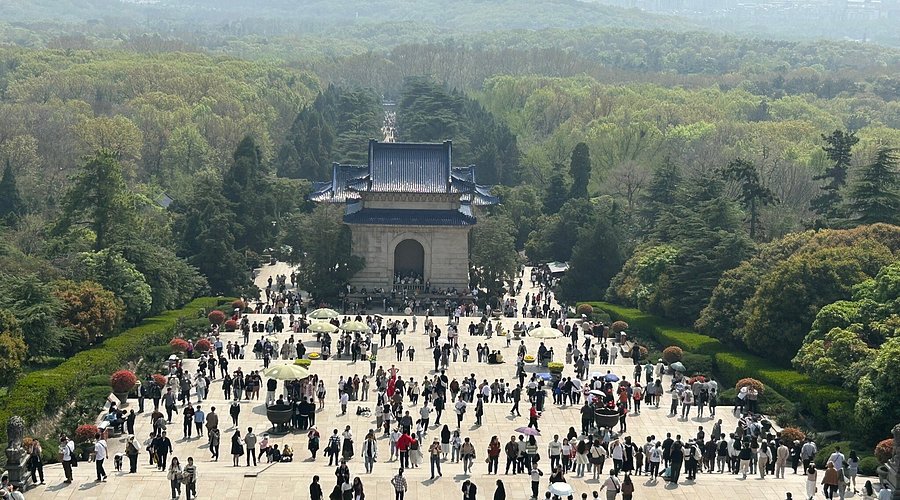
Sun Yat-Sen Mausoleum.
Tickets: Prices, Booking, and Tips
Visiting Dr. Sun Yat-sen’s Mausoleum is an enriching experience that combines history, culture, and stunning architecture. To make the most of your visit, it’s important to understand the ticketing process, prices, and booking methods.
Ticket Information
| Ticket Type | Price (CNY) | Includes |
|---|---|---|
| Free Entry | 0 | Access to the Mausoleum, Stele Pavilion, Sacrificial Hall, Burial Room. Booking required. |
| Open-air Music Hall | 10 | Entry to the music hall where cultural performances are held. |
| Combo Ticket | 100 | Access to the Open-air Music Hall, Xiaoling Mausoleum, Linggu Temple, and Meiling Palace. |
| Children (under 1.4m) | Free | Entrance is free for children below the height of 1.4 meters (4.6 feet). |
Booking Instructions
- Advance Reservation: While entry to the Mausoleum is free, it is mandatory to book your tickets in advance using your passport. This can be done via the official website or their WeChat account from 7:00 AM to 10:00 PM.
- On-Site Booking: If you haven’t booked online, you can use the ticket machines available on-site from 8:00 AM to 5:00 PM. However, it’s highly recommended to secure your spot earlier to avoid long waiting times.
Important Tips
- Plan Ahead: Given the popularity of the site, especially during holidays and weekends, consider booking your tickets as early as possible.
- Operating Hours: The site is open from 8:30 AM to 5:00 PM. Note that it is closed on Mondays, except on holidays and on Dr. Sun Yat-sen’s anniversary dates (November 12 & March 12).
- Combine Visits: After exploring the Mausoleum, you can take a sightseeing bus, battery car, or small train to visit nearby attractions such as the Ming Xiaoling Mausoleum and Linggu Temple. Tickets for these services are reasonably priced at 10 CNY per person.
By following these guidelines, you can ensure a smooth and enjoyable visit to Dr. Sun Yat-sen’s Mausoleum, immersing yourself in the rich history and culture of this significant landmark.
How to Get There: A Complete Transportation Guide
Traveling to the Sun Yat-sen Mausoleum
The Sun Yat-sen Mausoleum, situated on the picturesque Purple Mountain in Nanjing, Jiangsu Province, is a must-visit historical site for anyone exploring China. Here’s your complete transportation guide to reach this iconic landmark.
From the Nearest Major City: Nanjing
By Train
If you’re traveling from other major cities, Nanjing is well-connected by high-speed train.
- From Shanghai: Take a high-speed train from Shanghai Hongqiao Railway Station to Nanjing South Railway Station. The journey takes approximately 1 hour and costs around CNY 150-300 (depending on the class of service).
- From Beijing: Catch a high-speed train from Beijing South Railway Station to Nanjing South Railway Station, which takes around 4-5 hours and costs between CNY 500-800.
Upon arriving at Nanjing South Railway Station, you can take the metro or a taxi to the mausoleum.
By Bus
Long-distance buses also serve Nanjing from cities like Shanghai and Hangzhou. The bus journey may take longer (approximately 2-4 hours from Shanghai) and costs around CNY 100-150.
Local Transportation to the Mausoleum
By Metro
The most convenient way to reach the Sun Yat-sen Mausoleum from the city center is by using the Nanjing Metro:
- Metro Line 2: Take Line 2 and get off at Xiamafang Station. From there, it’s a 15-minute walk north to the mausoleum. Signs will guide you along the route.
By Bus
Alternatively, you can take bus routes that directly service the vicinity of the mausoleum:
- Bus 34: Ride bus 34 to Zhongshanling Tingchechang, which is a short walk from the entrance of the mausoleum.
Taxis and rideshare services like Didi are also readily available throughout Nanjing, providing a more direct but potentially pricier option.
Getting Around the Scenic Area
The Sun Yat-sen Mausoleum is set within a vast scenic area, and there are several methods to explore this beautiful locale:
On Foot
Walking is a delightful way to immerse yourself in the natural beauty that surrounds the mausoleum. The path from the entrance to the main hall features meticulously arranged gardens and trees, making for a pleasant stroll.
Sightseeing Train
For those who prefer a more leisurely pace, a sightseeing train operates within the scenic area. This can be a fun way to get around if you wish to explore without straining your legs.
- Ticket Price: CNY 10 per person.
Battery Cars
Battery-operated cars are available to shuttle visitors between the mausoleum and nearby attractions like the Ming Xiaoling Mausoleum and Linggu Temple, making it easy to explore more of the area without excessive walking.
- Ticket Price: CNY 10 per ride; a single trip on the tourist special line costs CNY 2.
Final Tips
- Entrance Fee: Visiting the mausoleum is free, but visitors must reserve tickets in advance using their passports. Reservations can be made online or through onsite machines.
- Opening Hours: The mausoleum is open from 08:30 to 17:00, but it’s closed on Mondays (except holidays). The burial room has limited access on weekends.
Whether you’re drawn by its historical significance or the serene beauty of the surrounding landscape, reaching the Sun Yat-sen Mausoleum is straightforward and well worth the journey. Enjoy your visit!
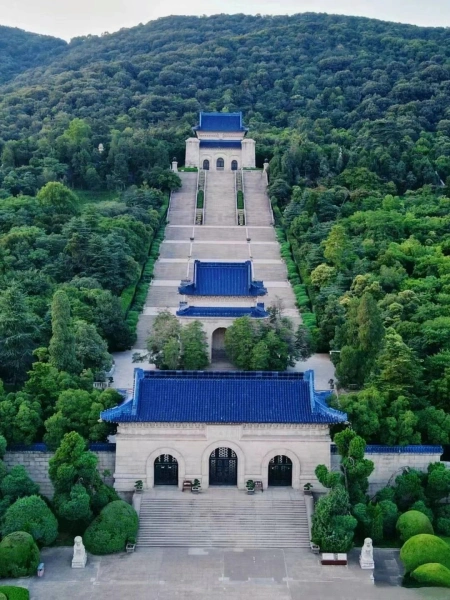
Sun Yat-Sen Mausoleum.
Local Cuisine and Accommodation Nearby
Nestled in the picturesque surroundings of Purple Mountain, the Sun Yat-Sen Mausoleum is not only a site of historical significance but also an excellent starting point for a culinary adventure and a comfortable stay in Nanjing. After immersing yourself in the rich history of this monument, treat your taste buds to some of the local delicacies before finding the perfect accommodation for your visit.
Local Cuisine
- Nanjing Salted Duck (盐水鸭)
A beloved specialty of Nanjing, this dish features tender duck marinated in a blend of salt, spices, and sometimes a hint of Shaoxing wine. The result is a juicy, flavorful bird that is often served cold, making it a refreshing choice, especially during warmer months. - Duck Blood Soup (鸭血粉丝汤)
This hearty soup is a comforting staple in Nanjing, made from duck blood, vermicelli noodles, and various vegetables. The rich broth is usually flavored with spices and herbs, providing a unique and savory experience that reflects the local palate. - Nanjing Dried Tofu (干豆腐)
This dish showcases the region’s penchant for soy products. The tofu is often seasoned with chili oil, garlic, and various spices, resulting in a delightful snack or side dish that’s both nutritious and satisfying. - Scallion Pancakes (葱油饼)
A popular street food, these flaky, savory pancakes are made with layers of dough and chopped scallions. Crispy on the outside and soft on the inside, they are perfect for a quick bite on the go or as part of a larger meal.
Accommodation Options
When it comes to finding a place to rest after your day of exploration, Nanjing offers a range of accommodations to suit every budget:
- Luxury: InterContinental Nanjing
Overlooking the Yangtze River, this high-end hotel combines modern luxury with traditional Chinese design. Guests can enjoy plush rooms, a serene spa, and several dining options that feature both local and international cuisines. The hotel’s proximity to the Sun Yat-Sen Mausoleum makes it an ideal choice for those seeking comfort and elegance. - Boutique: The Inn at the Crossroads
This charming boutique hotel offers a cozy atmosphere with personalized service. Each room is uniquely decorated, reflecting local culture and art. The Inn at the Crossroads is located within a short distance from the mausoleum and provides a lovely garden area for guests to unwind after a day of sightseeing. - Budget: Nanjing 168 International Youth Hostel
Perfect for backpackers and budget travelers, this hostel provides a friendly and vibrant environment. It offers dormitory-style accommodations and private rooms at affordable rates. The hostel’s communal areas are great for meeting fellow travelers, and its location makes it easy to access major attractions, including the Sun Yat-Sen Mausoleum.
With delectable dishes to savor and a variety of accommodations to choose from, your visit to the Sun Yat-Sen Mausoleum will surely be complemented by an authentic taste of Nanjing.
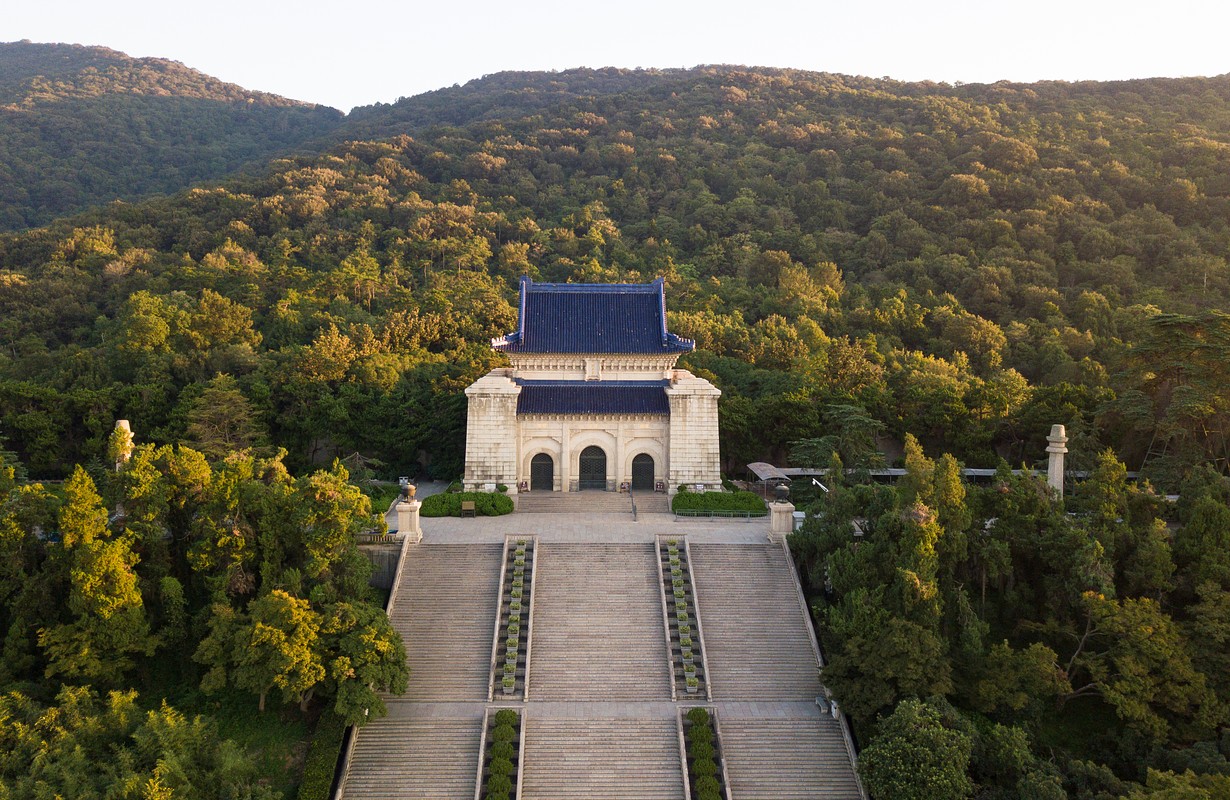
Sun Yat-Sen Mausoleum.
Frequently Asked Questions
Frequently Asked Questions about Sun Yat-sen Mausoleum
- Is the Sun Yat-sen Mausoleum suitable for children and the elderly?
Yes, the mausoleum is accessible for children and the elderly. The pathways are well-maintained, and there are plenty of resting spots along the way. However, be prepared for some stairs, particularly when visiting the Sacrificial Hall, which may require assistance for those with mobility issues. - Are there English signs and information available at the site?
Yes, the Sun Yat-sen Mausoleum features English signage throughout the grounds, providing visitors with information about the history and significance of the site. Additionally, audio guides in English are often available for those who want a more in-depth understanding of the mausoleum. - How much time should I plan to spend at the mausoleum?
Plan to spend around 2 to 3 hours exploring the Sun Yat-sen Mausoleum. This will give you ample time to take in the architecture, visit the various halls, and enjoy the beautiful scenery surrounding the site. - Is there an entrance fee to visit the mausoleum?
Entry to the Sun Yat-sen Mausoleum is free, but visitors must reserve tickets in advance using their passports. The reservation can be made through the official website or onsite at ticket machines. - What are the opening hours for the mausoleum?
The mausoleum is open daily from 8:30 AM to 5:00 PM, but it’s closed on Mondays, with some exceptions for holidays. Be sure to check ahead if you plan to visit on these days. - Are there any nearby attractions to visit after the mausoleum?
Yes, there are several attractions nearby, including the Ming Xiaoling Mausoleum and Linggu Temple. You can easily explore these sites via the sightseeing bus or battery car available in the area. - Is there parking available at the mausoleum?
Yes, there is parking available for visitors who choose to drive. However, it can fill up quickly, especially on weekends and holidays, so it’s recommended to arrive early or consider using public transportation. - What is the best way to get to the Sun Yat-sen Mausoleum using public transport?
You can take Metro Line 2 and disembark at Xiamafang Station, then walk north for about 15 minutes to reach the mausoleum. Alternatively, you can take bus 34 to Zhongshanling Tingchechang, which is also within walking distance of the site.
Final Thoughts on Your Trip
As your journey at Dr. Sun Yat-sen’s Mausoleum comes to a close, take a moment to reflect on the profound history and stunning architecture that envelops you. This mausoleum, set against the backdrop of the picturesque Purple Mountain, is not just a tribute to a remarkable leader but also a symbol of resilience and hope for millions. Walking along the grand marble pathways, through the majestic Paifang and the serene Sacrificial Hall, you are not merely a visitor; you are partaking in a narrative that has shaped modern China.
The blend of natural beauty and intricate design invites contemplation and reverence, reminding us of the sacrifices made for freedom and democracy. As you leave, carry with you not just memories of this awe-inspiring site, but also the spirit of Dr. Sun Yat-sen—his vision for unity and progress. Let your experience here inspire you to seek out the stories of others who have paved the way for change, both in China and around the world. Every travel experience is an opportunity to learn, grow, and contribute to a brighter future. Safe travels!